Cultural Currency 4: Dimitris Papaioannou Transverse Orientation at ROHM Theatre Kyoto
Papaioannou, a transversal tamer
Text: Shimizu Minoru
2022.08.29
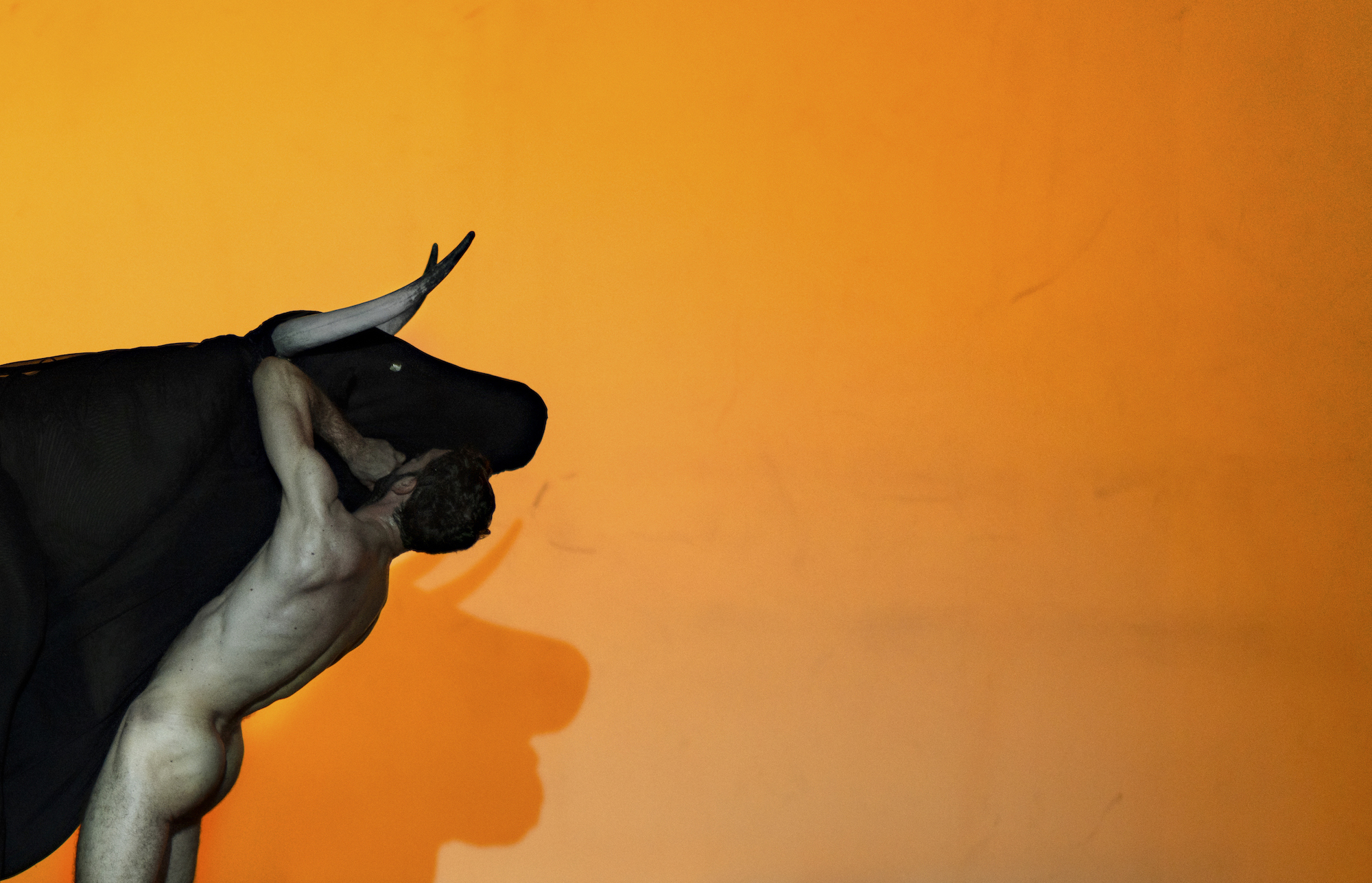
Behind the works of Dimitris Papaioannou there constantly echoes the theme of “taming.” It is said that culture “tames” wildness, but these are relative concepts, being dependent on the culture. Ultimately, taming involves a strong culture taming a weak culture, which is to say it involves violent, top-down domination (in modern history, the “white man’s burden”). From the Age of Discovery, the non-white world, deemed uncivilized and savage, has been progressively “tamed” and colonized. This vertical domination and exploitation underpins the early modern and modern European art that Papaioannou references. Almost all of the beautiful paintings and sculptures that grace art history are representations of white people, and this is perhaps the reason why on Papaioannou’s stage—unusually for a contemporary international dance company—people of color do not appear. In order for full nudity to be evoked as an art historical symbol, it must be white nudity (one might add that, “Greece,” too, is a modern concept constructed as the “cradle of Europe” in contrast to colonized “non-Europe”).
In order to go beyond this cultural relativism, which cannot avoid actual colonialism, some—the last modernists—posit absolute wildness as that outside all human civilization. Here, “taming” involves incorporating absolute wildness into human culture and at the same time connotes the impossibility of this. Like a coastline inundated with a tsunami, civilization always entails a struggle between the possibility and impossibility of taming absolute wildness. The Great Tamer (2019) was truly the last modernists’ dream. Reflecting the struggling parties, the stage was arranged into two levels, one on top of the other. The invisible underground level was deemed the territory of the wild, and on the stage, overlaid with thin sheets of plywood covering that realm, aspects of human culture—from classical painting to astronauts—were acted out one after another like the movable backdrops in kabuki, occasionally interrupted by the wildness that broke through the plywood and burst onto the stage.
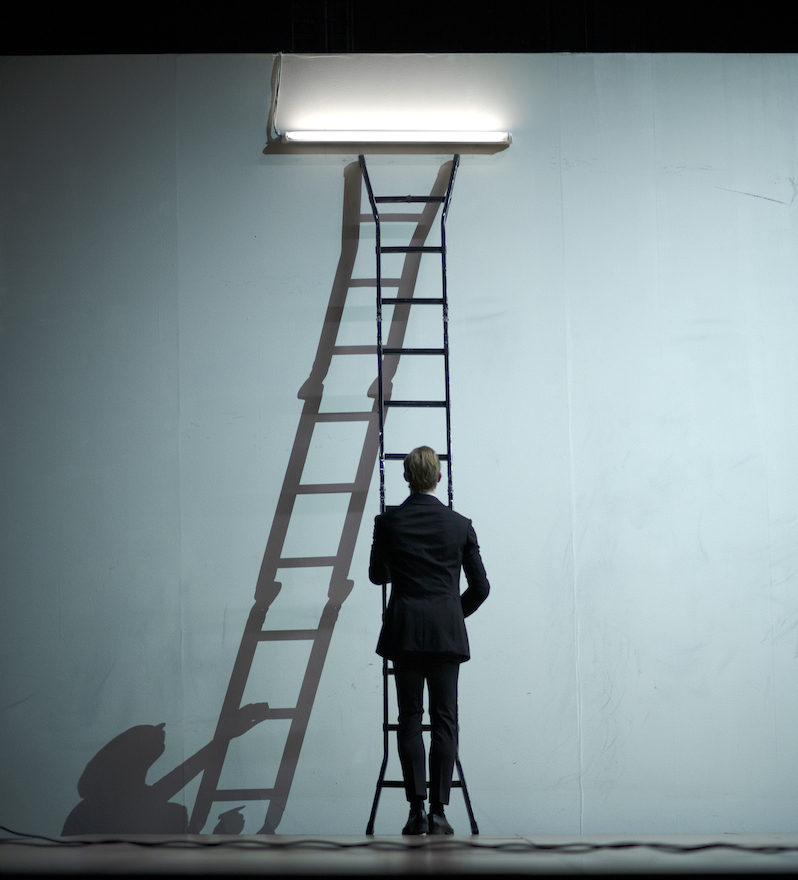
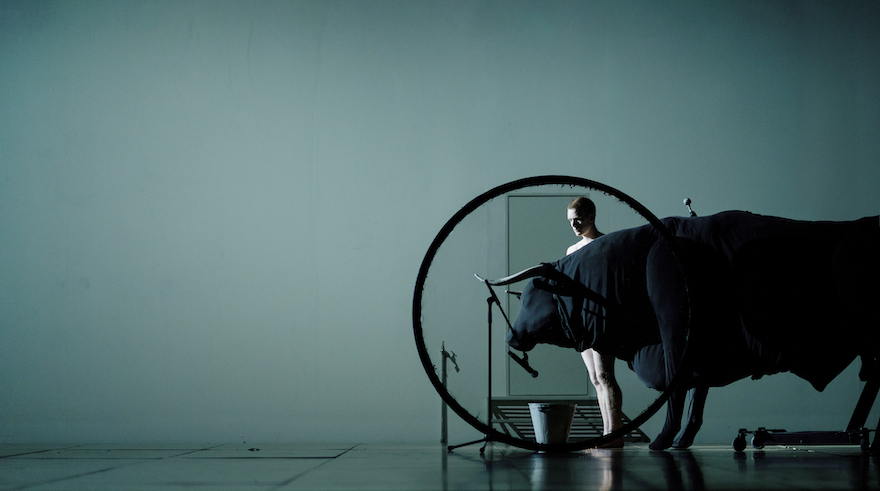 This latest work, Transverse Orientation, appears to be an attempt to lead the top-bottom relationship that still remained in the previous work towards a transversal/horizontal relationship. The stage is divided by a large wall not into top and bottom, but into front and back. One cannot see behind the wall, but there is a single door connecting front and back, and the figures who appear by passing through it present creative performances (dances) one after another without pausing for breath, continually arousing memories of images in our minds. However, demonstrative art historical references are scarce, and the contrasting elements—e.g. technology (a fluorescent lamp resembling “The Illuminating Gas”) and the human body (acrobatics pushing the physical abilities of the dancers to their limit), human culture (a black suit) and human nature (nudity), animal (a bull) and human, man and woman, inside and outside, truth and falsehood—are no longer struggling against each other, but partially intersecting while retaining their individuality and merging like a chimera (a stepladder and dancer merge; two dancers interconnect their upper and lower bodies and their clothed and exposed parts and crawl about and perform turns; a bull gives birth to a woman; a human with a bull’s head; an externalized womb is squashed and a baby emerges from the amniotic fluid that spills out; shadow pictures cast on the wall by lights and black entities intermingle). The water in a bucket drunk by the “tamed” bull, the “waterdrops” (actually tiny gel balls) showered over bodies that writhe like Laocoön sculptures, the trickling amniotic fluid, the falling water that is reflected on the floor and forms an aura of light that envelopes Mary (?) and other expressions of the theme of “The Waterfall” finally cover the stage, revealing that everything up to that point was carried out on top of latent water, linking with the theme of “taming.” Here, “water” as the latent element traversing every different thing (Thales?) links humans (civilization) and nature (wildness). It is the realization that “taming” freed from vertical, controlling relationships always entails those doing the taming and those being tamed already being traversed or permeated by some common thing.
This latest work, Transverse Orientation, appears to be an attempt to lead the top-bottom relationship that still remained in the previous work towards a transversal/horizontal relationship. The stage is divided by a large wall not into top and bottom, but into front and back. One cannot see behind the wall, but there is a single door connecting front and back, and the figures who appear by passing through it present creative performances (dances) one after another without pausing for breath, continually arousing memories of images in our minds. However, demonstrative art historical references are scarce, and the contrasting elements—e.g. technology (a fluorescent lamp resembling “The Illuminating Gas”) and the human body (acrobatics pushing the physical abilities of the dancers to their limit), human culture (a black suit) and human nature (nudity), animal (a bull) and human, man and woman, inside and outside, truth and falsehood—are no longer struggling against each other, but partially intersecting while retaining their individuality and merging like a chimera (a stepladder and dancer merge; two dancers interconnect their upper and lower bodies and their clothed and exposed parts and crawl about and perform turns; a bull gives birth to a woman; a human with a bull’s head; an externalized womb is squashed and a baby emerges from the amniotic fluid that spills out; shadow pictures cast on the wall by lights and black entities intermingle). The water in a bucket drunk by the “tamed” bull, the “waterdrops” (actually tiny gel balls) showered over bodies that writhe like Laocoön sculptures, the trickling amniotic fluid, the falling water that is reflected on the floor and forms an aura of light that envelopes Mary (?) and other expressions of the theme of “The Waterfall” finally cover the stage, revealing that everything up to that point was carried out on top of latent water, linking with the theme of “taming.” Here, “water” as the latent element traversing every different thing (Thales?) links humans (civilization) and nature (wildness). It is the realization that “taming” freed from vertical, controlling relationships always entails those doing the taming and those being tamed already being traversed or permeated by some common thing.
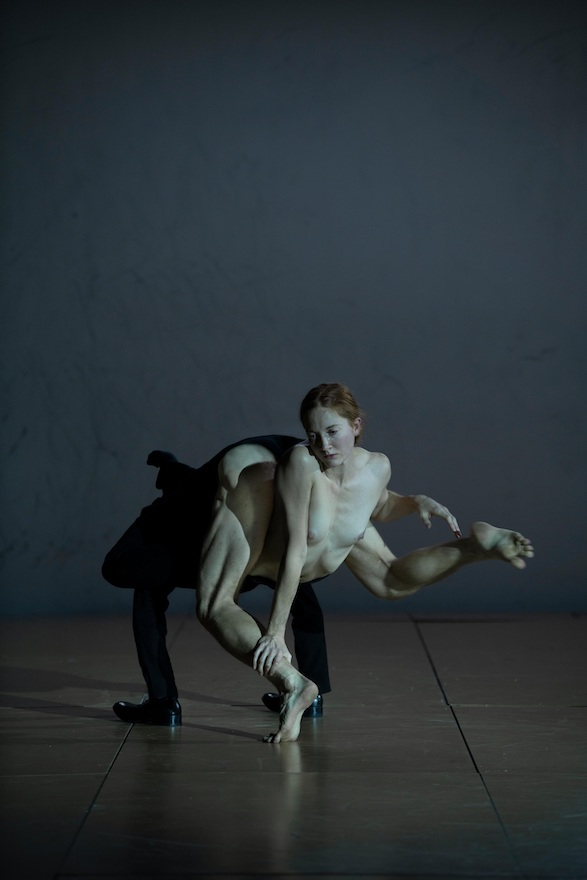
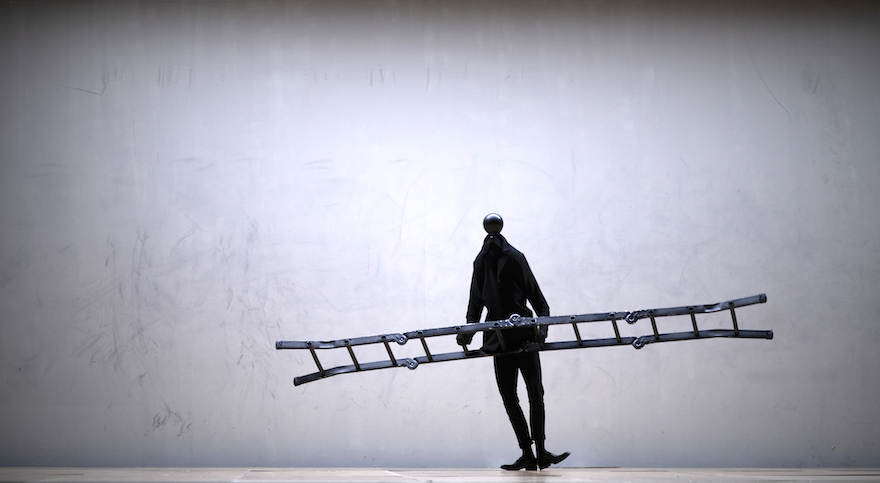
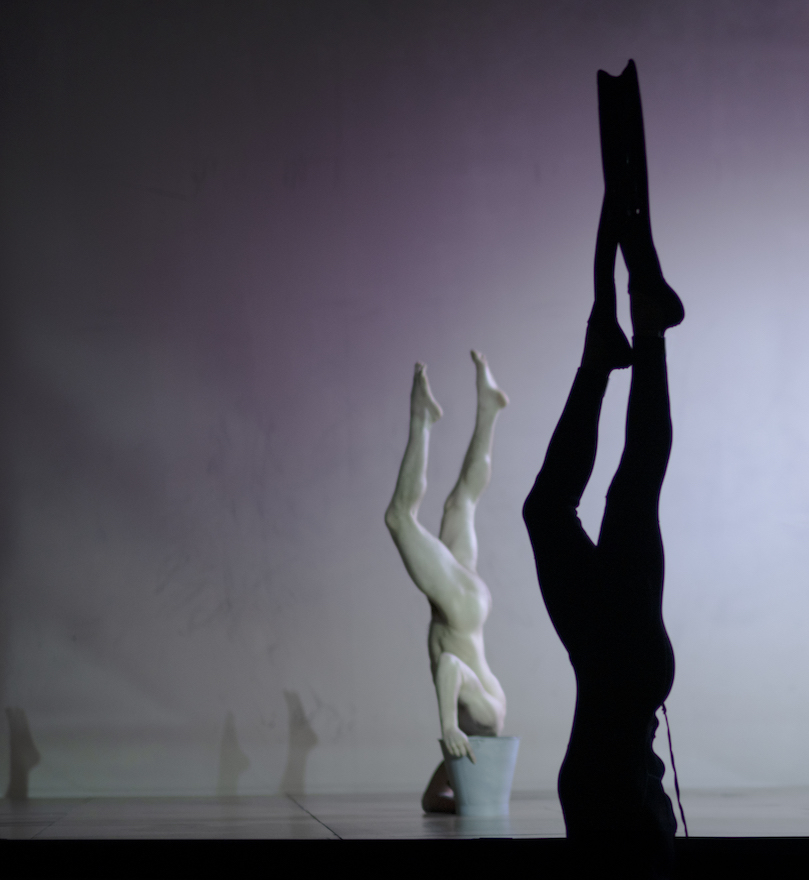

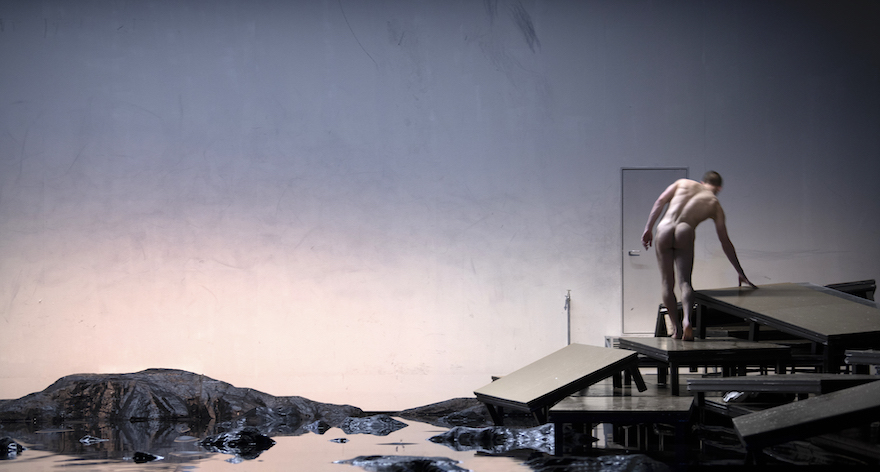 ——————————–
——————————–
*A Roman Catholic/Greek Orthodox term referring to the Eucharistic ritual in which the bread and wine used during mass are converted into the body and blood of Christ.
Shimizu Minoru
Critic. Professor, Doshisha University.
Dimitris Papaioannou Transverse Orientation was held on August 10 and 11, 2022 at ROHM Theatre Kyoto. This review was written based on the August 10 performance. All photos in this article were taken at past performances.
In order to go beyond this cultural relativism, which cannot avoid actual colonialism, some—the last modernists—posit absolute wildness as that outside all human civilization. Here, “taming” involves incorporating absolute wildness into human culture and at the same time connotes the impossibility of this. Like a coastline inundated with a tsunami, civilization always entails a struggle between the possibility and impossibility of taming absolute wildness. The Great Tamer (2019) was truly the last modernists’ dream. Reflecting the struggling parties, the stage was arranged into two levels, one on top of the other. The invisible underground level was deemed the territory of the wild, and on the stage, overlaid with thin sheets of plywood covering that realm, aspects of human culture—from classical painting to astronauts—were acted out one after another like the movable backdrops in kabuki, occasionally interrupted by the wildness that broke through the plywood and burst onto the stage.





*
Incidentally, “taming” (apprivoiser) is a central theme in The Little Prince. The fox, who in Chapter 21 says to the prince, “I am not tamed” (“Je ne suis pas apprivoisé“), informs him that “to tame” means “to establish ties,” that tamer and tamed will become unique in all the world to each other, and that it is a condition for truly knowing something. The fox’s teaching is also perhaps a cornerstone of art appreciation. For example, people who say they cannot be moved by opera because tales of rings and elixirs of love are divorced from reality, or who say the music in The Magic Flute is wonderful and that it is best not to try to understand the German lyrics or dialogue, have not been tamed by opera. The human emotions and commonplace plots that have been repeated thousands of times are nothing but empty forms. But when individual members of the audience connect their own actual memories and emotions to these (establish ties), in a way opera gives rise to transubstantiation. (1) Similarly, Papaioannou’s works themselves are made up of hollow symbolic entities (pictogram-like figures with black spheres as heads, men in black suits, nudes). Furthermore, his stages are places where dancers, here and now through the movements of their superb bodies, establish ties with hollow symbols (are tamed). This also extends to the relationship between the work and the audience. Because the “transversal orientation” also applies to the stage and the audience, which is to say Papaioannou’s work tames the audience. Judging by the standing ovation at the end of the performance, only a few remained untamed.

*A Roman Catholic/Greek Orthodox term referring to the Eucharistic ritual in which the bread and wine used during mass are converted into the body and blood of Christ.
Shimizu Minoru
Critic. Professor, Doshisha University.
Dimitris Papaioannou Transverse Orientation was held on August 10 and 11, 2022 at ROHM Theatre Kyoto. This review was written based on the August 10 performance. All photos in this article were taken at past performances.